A block A has been placed symmetrically over two identical blocks B and C. All the three blocks have equal mass, M each, and the horizontal surface on which B and C are placed is smooth. The coefficient of friction between A and either of B and C is μ. The block A exerts equal pressure on B and C. A horizontal force F is applied to the block B.
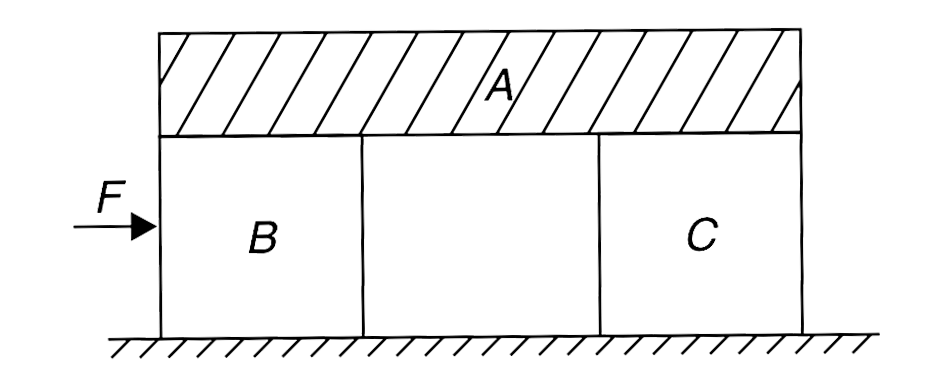
(a) Find maximum value of F so that A does not slip on B or C and the three blocks move together.
(b) If F is increased beyond the maximum found in (a) where will we see slipping first- at contact of A and B or at the contact of A and C.
(c) If F is kept half the maximum found in (a), calculate the ratio of friction force between A and B to that between A and C. Does this ratio change if F is decreased further?
The correct Answer is:Fmax=34μMg
(b) Between A and B
(c) 2 , No
Step by step video, text & image solution for A block A has been placed symmetrically over two identical blocks B and C. All the three blocks have equal mass, M each, and the horizontal surface on which B and C are placed is smooth. The coefficient of friction between A and either of B and C is mu. The block A exerts equal pressure on B and C. A horizontal force F is applied to the block B. (a) Find maximum value of F so that A does not slip on B or C and the three blocks move together. (b) If F is increased beyond the maximum found in (a) where will we see slipping first- at contact of A and B or at the contact of A and C. (c) If F is kept half the maximum found in (a), calculate the ratio of friction force between A and B to that between A and C. Does this ratio change if F is decreased further? by Physics experts to help you in doubts & scoring excellent marks in Class 11 exams.
Updated on:21/07/2023Topper's Solved these Questions
Similar Questions
A 3kg block is placed over a 10kg block and both are placed on a smooth horizontal surface. The coefficient of friction between the blocks is 0.2. IF a horizontal force of 20N is applied to 3kg block. Find the acceleration of the two blocks.

View SolutionThe coefficient of static friction between the two blocks shown in figure is μ and the table is smooth. What maximum horizontal forced F can be applied to he block of mass M so that the block move together?
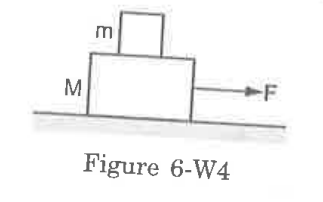
View Solution
Knowledge Check
A block of mass m is placed on a rough horizontal surface. If minimum force to pull the block is mg2 then coefficient of friction is :
A12B√3C1√3DNoneA block A of mass 2 kg rests on another block B of mass 8 kg which rests on a horizontal floor. The coefficient of friction between A and B is 0.2 while that between B and floor is 0.5. when a horizontal force of 25 N is applied on the block B. the force of friction between A and B is
AzeroB3.9 NC5.0 ND49 NA block A of mass 2kg rests on another block B of mass 8kg which rests on a horizontal floor. The coefficient of friction between A and B is 0.2 while that between B and floor is 0.5.When a horizontal floor F of 25N is applied on the block B the force of friction between A and B is
A3NB4NC2NDzero
On a smooth horizontal surface a block A of mass 10kg is kept. On this block a second block B of mass 5kg is kept. The coefficient of friction between the two blocks is 0.4 .A horizontal force of 30N is applied on the lower block as shown. The force of friction between the blocks is
View SolutionA block A of mass 2kg is placed over smooth block B of mass 4kg which is placed over a smooth horizontal floor The coefficient of friction between A and B is 0.4 when a horizontal forces of magnitude 10N is applied on A the acceleration of block of A and B are
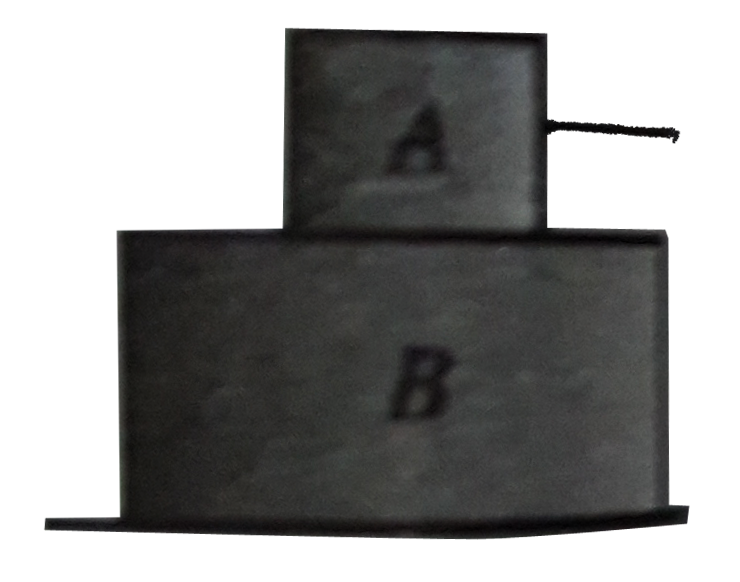
View SolutionA block of mass m is placed on a rough horizontal surface. The coefficent of friction between them is μ. An external horizontal force is applied to the block and its magnitude is gradually increased. The force exerted by the block on the surface is R.
View SolutionTwo blocks A and B are lying on the table as shown in the figure. The coefficient of friciton between block A and block B is μ. The coefficient of friction between block B and ground also μ. An external force F is applied in the direction shown. The maximum value of the force F that can be applied without moving the blocks.
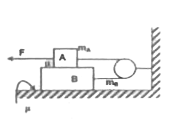
View SolutionA block of massm is placed on another block of mass M which itself is lying on a horizontal surface .The coefficient of friction between two blocks is μ1and that between the block of mass M and horizontal surfece is μ2 What maximum horizontal force can be applied to the lower block move without separation?
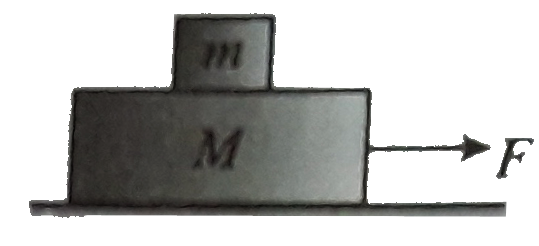
View Solution
